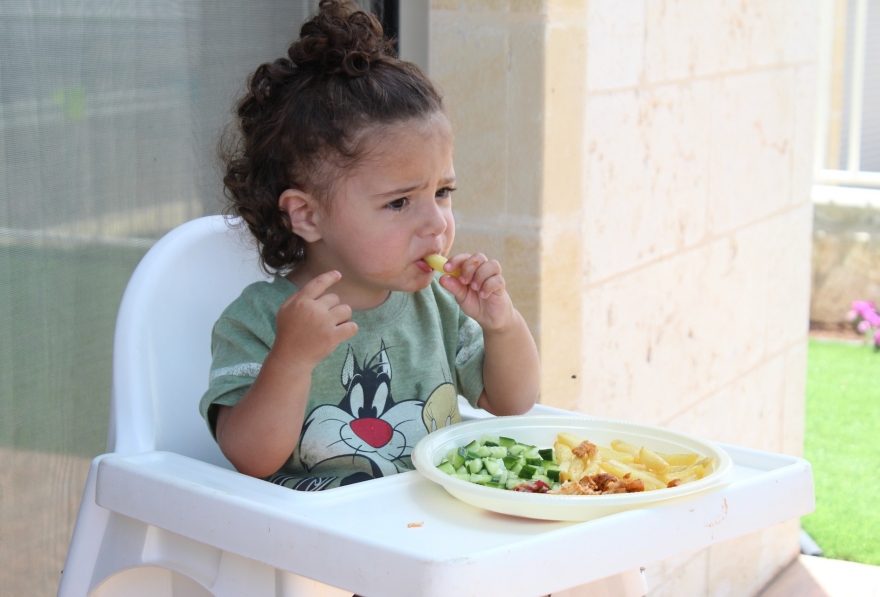Feeding therapy is a specialised form of therapy that helps children with feeding difficulties to learn how to eat or can help them to eat better.
Children may have difficulties with chewing, drinking, expanding the range of foods they eat, or swallowing foods.
Mealtime Routines
Creating routines around mealtimes can help your child to learn about food and eating through the consistent use of familiar situations and objects.
Routines such as having mealtimes at the same table, using the same eating utensils and sitting in the same spot at the table can help prepare your child for mealtimes, and help them to be ready for eating.
Social Modelling at Mealtimes
Children learn new skills and behaviours by watching others and learning from them. This is the same with eating. Children learn to eat by watching others around them.
Sitting at the table and eating with your child helps to provide opportunities for them to learn about eating by watching what you do and how you do it. This means that it is important to be a good role model for your child and model positive interactions with food.
Using Positive Reinforcements
During mealtimes, praise and provide positive reinforcement when your child has any interaction with food. Verbal praise, along with smiling are some of the best and most natural positive reinforcements that can be used.
Often when children don’t eat, mealtimes can become a stressful struggle for everyone in the family, so remembering to provide praise and encouragement for even the smallest of interactions with food is very important.
Offering Manageable Foods
A frequent problem that arises with children who have difficulty eating is that they are sometimes being offered foods that they cannot manage to eat. Giving a child food that they perceive as unmanageable can lead to them feeling overwhelmed, frustrated, and defeated.
When providing food during mealtimes, aim to provide only a limited number of different foods on their plate at any one time, and ensure that they are provided in small, easy to chew, bite sized pieces, or in long, thin strips that the child can easily hold in their hand.
Talk About Food
At mealtimes, talk with your child about the food in front of them. Describe the colour, shape, texture, and whether it is hard or soft. This will help to teach your child the physical properties of the food that is on their plate and will help your child to understand how to make the foods work in their mouth when eating them.
For example, by talking about a carrot stick being hard helps teach that strong pressure through biting and chewing will be needed to break that food apart, compared to custard which is wet and smooth and can be eaten by simply swallowing down.
How does Harrison Speech Pathology help children with Feeding Therapy
At Harrison Speech Pathology, we have Speech Pathologists who specialise in the assessment and management of feeding difficulties.
Please contact Harrison Speech Pathology if you have any questions or queries related to feeding difficulties and your child.





